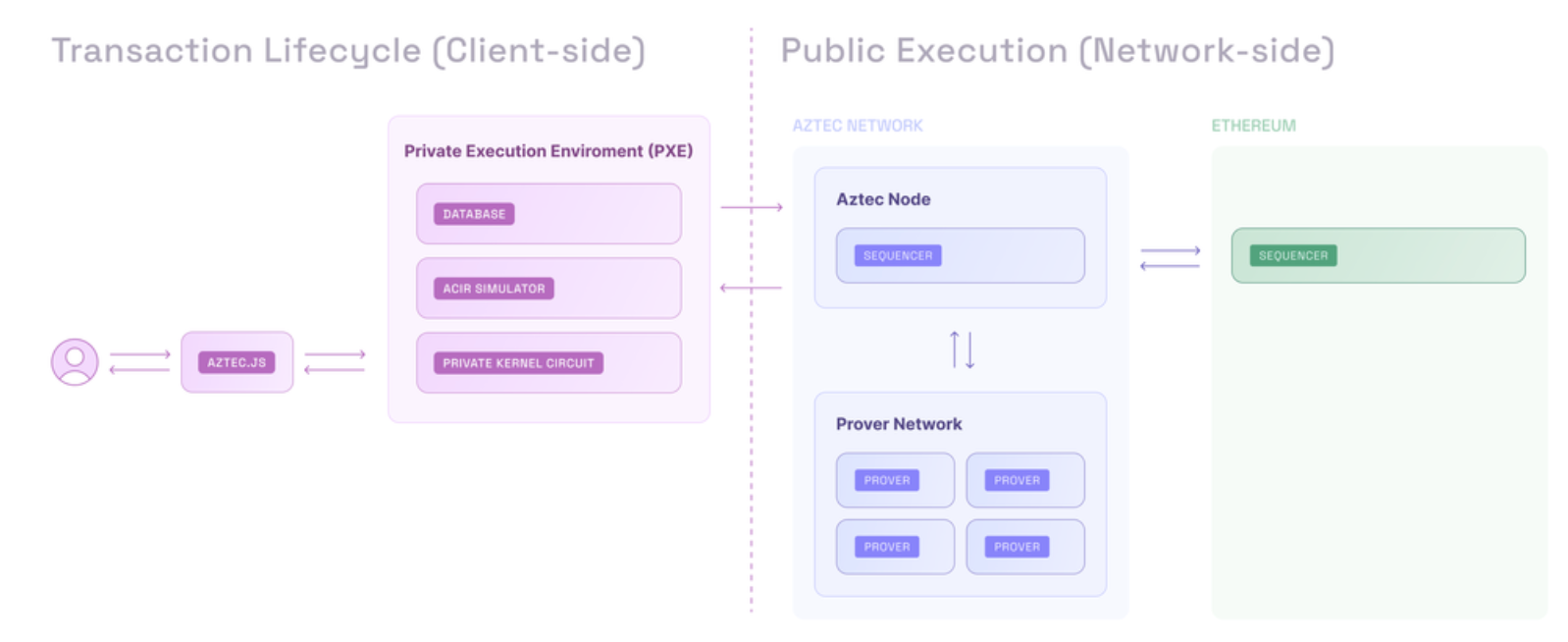Introduction
Obsidion Wallet is a wallet for blockchain assets on Aztec, which is a layer 2 blockchain built on top of Ethereum. Aztec is the first zk-zk Rollup which enables a hybrid-state model. You can learn more about Aztec here https://docs.aztec.network/
Some more information about Aztec will be explained below.
Brief Overview of Aztec
Aztec is a privacy first layer 2 on Ethereum. It supports both private & public state and private & public execution.

Obsidion Wallet handles the lifecycle of transactions for the user so they do not have to worry about the complexity of the network.
Wallets on Aztec
Wallets on Aztec manage user accounts, handling private state and interacting with a users PXE (Private eXecution Environment). The PXE is a client-side library for the execution of private operations. Private state is handled here on the users device and is then broadcasted to the network in the form of client-side zero-knowledge proofs.
Public state and functions are not handled on the user device. They are executed by the Aztec Virtual Machine (AVM). This is similar to how things are done on Ethereum.
The lifecycle of transactions on Aztec that contain both private & public state are that private state is executed first client-side on the users device and public transactions are then executed by the sequencer.
What is an Account
Aztec has native account abstraction which means that every account is its own smart contract. This is different to Ethereum land which uses EOAs (Externally Owned Account) which are not smart contracts. However this will change soon...
How are Balances Calculated?
Aztec uses a UTXO (Unspent Transaction Output) model, this is similar to Bitcoin and zCash.
In terms of token balances. A note in Aztec can represent a discrete, unique unit. Let us compare a note that holds an integer as similar to a cash note (in real life) which can be passed around. For example, if you use a $5 note to buy an item costing $3, you would recieve $2 in change. In Aztec, this transaction would invloce 3 notes for the system, 2 notes for the individual: one spent ($5) one returned as change ($2), and a $3 note for the recipient. Once a note is spent, it’s permanently consumed.